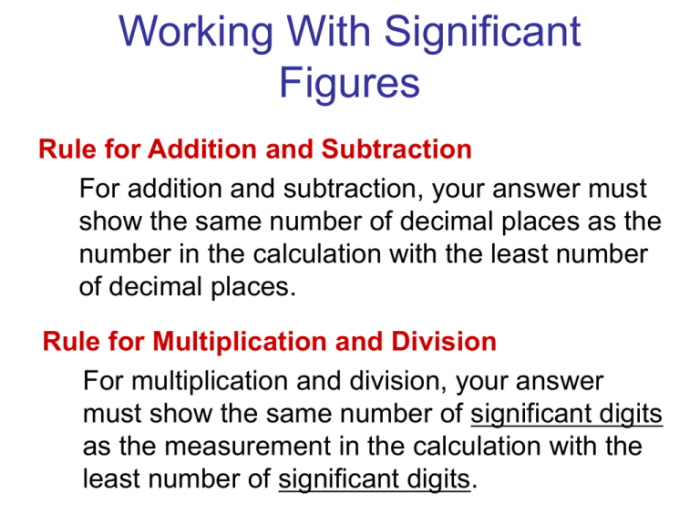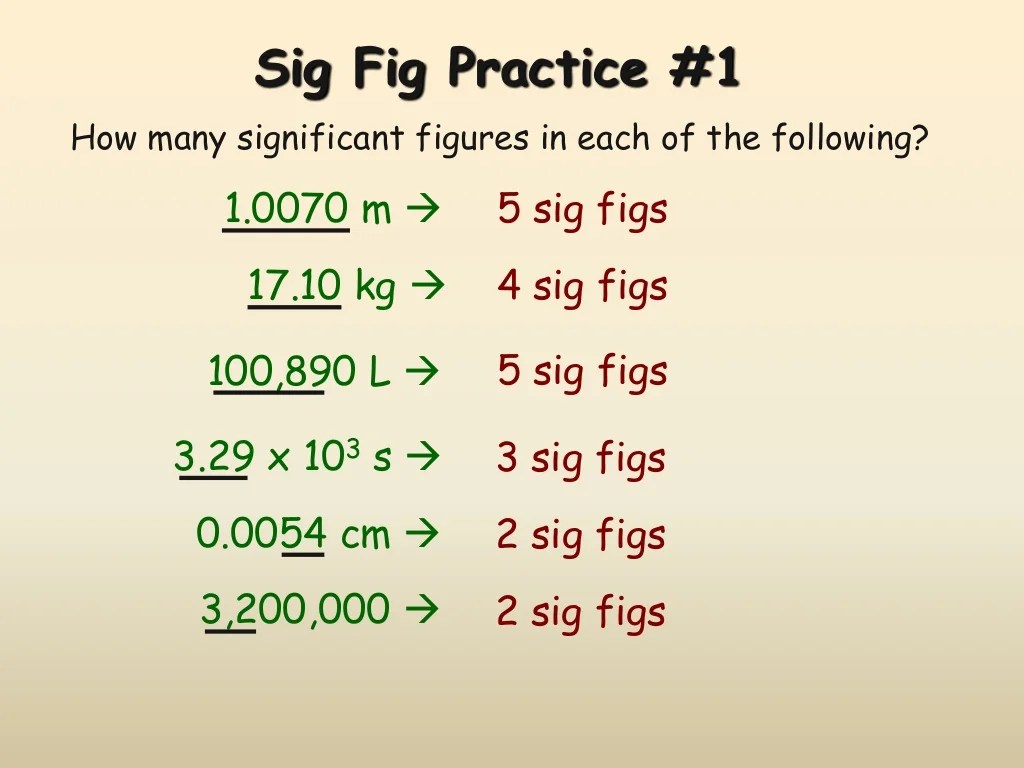Multiplying and dividing sig figs worksheet – The Multiplying and Dividing Significant Figures Worksheet provides a comprehensive guide to understanding and applying the rules of significant figures in calculations. It offers a clear overview of the concept, step-by-step examples, and interactive practice problems to enhance your mastery of this essential skill.
Significant figures, also known as significant digits, are crucial in scientific and engineering calculations, ensuring the accuracy and reliability of the results. This worksheet delves into the importance of significant figures, the rules governing their multiplication and division, and their practical applications in real-world scenarios.
Introduction to Multiplying and Dividing Significant Figures: Multiplying And Dividing Sig Figs Worksheet

In scientific calculations, it is crucial to consider the number of significant figures (sig figs) in measurements to ensure the accuracy and reliability of the results. Significant figures are the digits in a number that are known with certainty, plus one estimated digit.
Understanding the rules for multiplying and dividing sig figs is essential for performing precise calculations.
Rules for Multiplying and Dividing Significant Figures, Multiplying and dividing sig figs worksheet
- When multiplying numbers with different sig figs, the result has the same number of sig figs as the number with the least sig figs.
- When dividing numbers with different sig figs, the result has the same number of sig figs as the dividend (the number being divided).
These rules ensure that the result reflects the uncertainty associated with the measurements used in the calculation.
Examples of Multiplying and Dividing Significant Figures
- Multiplying 2.30 (3 sig figs) by 4.5 (2 sig figs): Result = 10.35 (2 sig figs)
- Dividing 12.50 (4 sig figs) by 2.5 (2 sig figs): Result = 5.00 (2 sig figs)
In these examples, the number of sig figs in the result is determined by the number with the least sig figs, as per the rules discussed earlier.
Applications of Multiplying and Dividing Significant Figures
- Scientific Experiments:Calculating the concentration of a solution or determining the density of a substance.
- Engineering Calculations:Designing structures, determining forces, and calculating heat transfer.
In these applications, the accuracy of the result directly depends on the number of sig figs used in the calculations.
Practice Problems
- Multiply 3.45 (3 sig figs) by 2.1 (2 sig figs).
- Divide 15.00 (4 sig figs) by 3.0 (2 sig figs).
Interactive Worksheet
An interactive worksheet can be designed to provide students with practice problems, immediate feedback, and worked-out solutions. This can enhance their understanding of the rules and applications of multiplying and dividing significant figures.
FAQ Compilation
What are significant figures?
Significant figures are the digits in a number that are known with certainty, plus one estimated digit.
Why are significant figures important?
Significant figures ensure that the accuracy of calculations is not misrepresented by reporting digits that are not known with certainty.
What are the rules for multiplying and dividing significant figures?
When multiplying or dividing significant figures, the result should be reported with the same number of significant figures as the number with the fewest significant figures.



